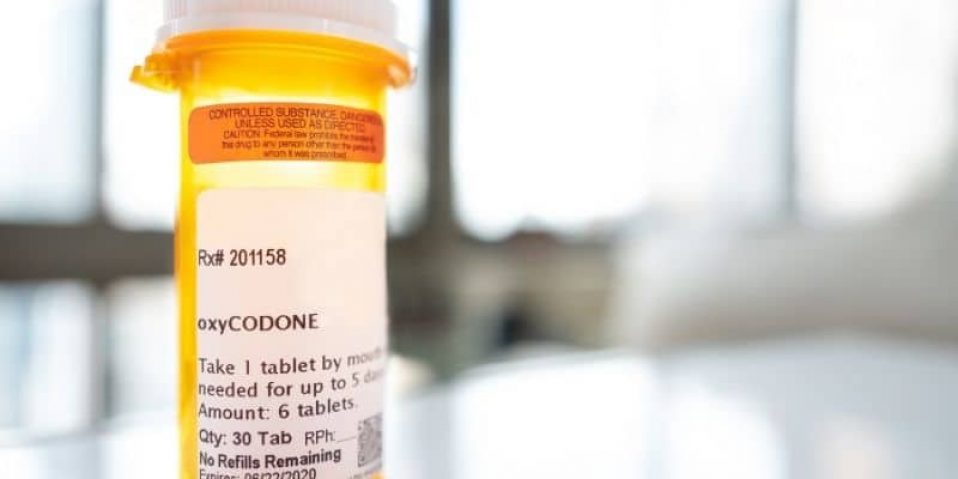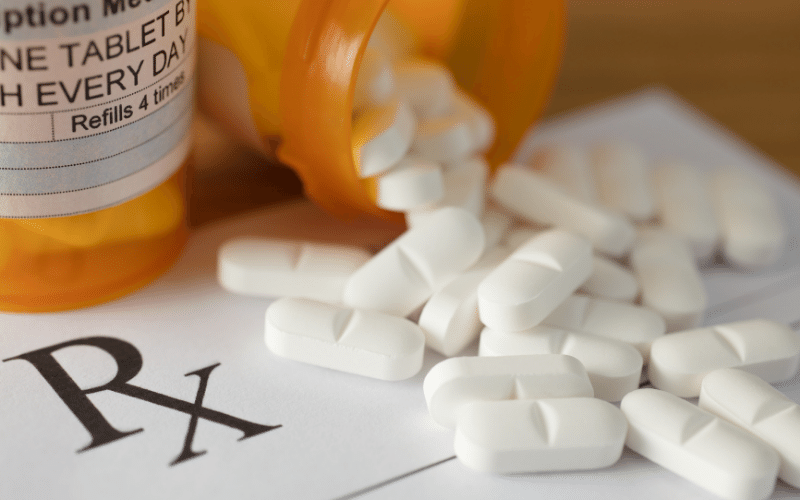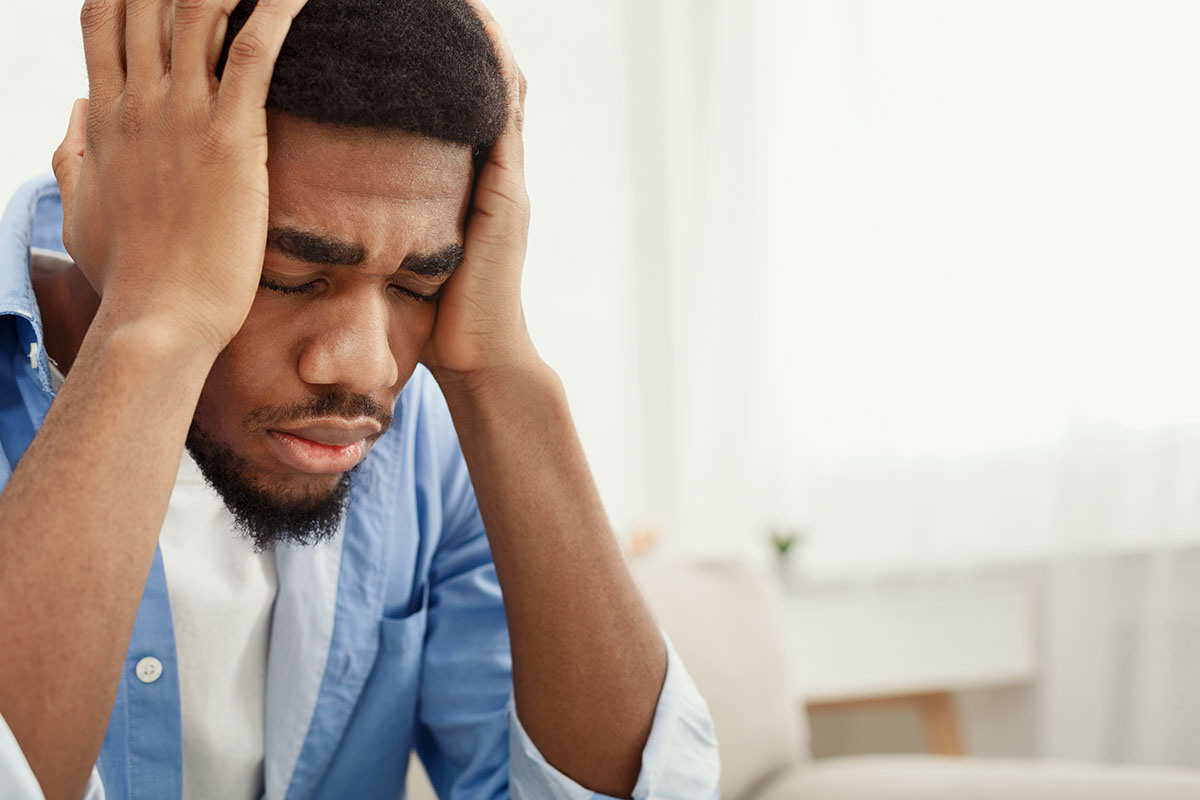Oxycodone is a prescription opioid for moderate to severe pain, often prescribed after an injury, surgery, or severe pain. It’s a Schedule II controlled substance, which means it has a high potential for misuse, potentially leading to misuse and abuse. Also, the amount of time oxycodone stays in your system plays a role in this risk of misuse.
What is Oxycodone?
Oxycodone is the main ingredient in many prescription painkillers to treat moderate to severe or chronic pain. These types of pills come in various shapes, colors, and sizes, depending on the dose. Oxycodone is also available in liquid form. Doctors prescribe oxycodone in conjunction with other drugs like aspirin, ibuprofen, and acetaminophen. Since oxycodone only refers to the active ingredient, the prescription drug also has different names. To starters, people can find the brand name for this drug as:
- OxyContin
- Percocet (oxycodone combined with acetaminophen)
- Roxycodone
Also, slang or street names for oxycodone include:
- Oxy
- OC’s
- Oxycet
- Oxycotton
- Berries
- Killers
- Percs
- Roxi’s
- Hillbilly heroin
How Long Does Oxycodone Last?
It only takes about 20 to 30 minutes to start feeling the first effects of orally-taken oxycodone. It usually reaches peak concentrations in the bloodstream about one to two hours after ingestions. However, the extended- and controlled-release formulations can sometimes take up to four hours to reach peak concentrations in the bloodstream. Immediate-release formulations have a half-life of 3.2 hours. This means it takes that length of time for the average person to eliminate half of the dose of oxycodone. Controlled- and extended-release formulations have a half-life of about 5.6 hours, on average. Over time, some people develop a tolerance to oxycodone, which means it might not be as effective as initially.
How Long Does Oxycodone Stay in Your System?
Oxycodone’s action is effectively eliminated from the blood in 22.5 hours. Although, for most people, the full effects of the drug will wear off after 24 hours. An at-home drug test can test positive for oxycodone after three hours of someone’s last dose. But, according to the Food and Drug Administration (FDA), these tests can show the presence of oxycodone for up to three days. Most oxycodone detection windows are between 12 hours and 90 days:
- Blood Tests: In blood tests, oxycodone is only detectable for up to 24 hours.
- Urine Tests: Oxycodone will show up in urine tests for three to four days after the dose. However, standard urine tests don’t pick up oxycodone, so additional testing might be required.
- Saliva Tests: Like urine, oxycodone can be traced in saliva tests for one to four days.
- Hair Tests: Oxycodone can be detected in a hair follicle test for up to 90 days.
What Affects How Long Oxycodone Stays in the Body
Several factors play a role in how long oxycodone can be detected in the body. Things like duration of use, age, sex, kidney function, and liver impairment can interfere.
What Makes Oxycodone Last Longer
Some of these factors can increase the half-life of oxycodone, making it stay in the body for longer. For example:
- Liver damage increases the half-life of oxycodone by 2.3 hours
- Poor kidney function increases the average half-life of oxycodone by one hour
- Mixing alcohol and oxycodone will make it take longer to leave the body and also increases the risk of fatal overdose
- Taking oxycodone with other medications like antibiotics, antifungal agents, and protease inhibitors can make it more difficult for the body to break down oxycodone, which can result in respiratory depression
Symptoms of Overdose
Knowing how long oxycodone stays in a person’s system is key to preventing an overdose or dangerous interactions with alcohol and medications. If you take more doses to relieve pain after the effects of the last dose were off before the drug is out of the system, you’re increasing your risk of overdose. Crushing, cutting, or chewing a capsule or tablet before consuming it, also increases the risk of overdose. This will release the entire dose immediately rather than allowing for timed delivery. Here are some possible side effects that can be a sign of overdose:
- Pinpoint pupils
- Constipation
- Nausea
- Vomiting
- Low blood pressure
- Weak pulse
- Coma
- Drowsiness
- Seizures
- Breathing issues
- Bluish skin (fingernails and lips)
[box type=”bio”] If someone overdoses on oxycodone, call 911 immediately or the national toll-free Poison Help hotline (1-800-222-1222). If you have Naloxone available, administer it following the instructions on the package. Naloxone can reverse an opioid overdose and possibly save a life. [/box]
How to Get Oxycodone Out of Your System (Safely)
Since oxycodone can develop a physical dependence, don’t stop taking oxycodone abruptly without supervision. This can lead to withdrawal symptoms, which doesn’t mean you’re addicted to oxycodone. Dependence is different from addiction. In this case, your body has become dependent on the presence of the drug. When you stop taking it suddenly, your body will feel an imbalance which is why you experience withdrawal symptoms such as:
- Restlessness
- Runny nose
- Insomnia
- Muscle cramps
- Joint aches
- Vomiting
- Sweating
Most opiate withdrawal symptoms improve within 72 hours and decrease significantly within a week. It’s important to discuss with your doctor to go through this process safely and comfortably.
What If I Developed an Addiction?
However, if you’ve developed an addiction to oxycodone, you should seek medical help from an addiction treatment center. Beyond the physical symptoms of withdrawal, mental health symptoms like depression and anxiety can be difficult to manage without professional help. Most people starting their oxycodone addiction treatment are recommended a detox program paired with a partial hospitalization program (PHP) that eases withdrawal symptoms and provides patients with a secure and supervised environment to begin their recovery, including:
- Medical Detox: In this clinically supervised detox process, we ensure the patient’s safety and make the withdrawal phase as comfortable as possible by minimizing withdrawal symptoms and using medication-assisted treatment services to guarantee a complete detoxification process.
- Inpatient Programs: These offer a temptation-free environment that’s designed to help people in recovery. In this case, people check into a living drug rehab facility, and they attend meetings and therapy sessions while remaining in a supervised environment.
- Intensive Outpatient Programs: When patients seek addiction treatment while maintaining daily obligations like work, school, or caregiving, IOPs are a more flexible option that still gives people access to the help they need.
- Long-term Recovery Programs: With long-term recovery assistance, patients can have the ongoing support they need to maintain long-lasting sobriety. Recovery programs are crucial to relapse prevention.
Getting Help for Drug Addiction
If you or someone you love is struggling with drug abuse, ask for help immediately. Please, call the Lighthouse Recovery Institute today and speak with our addiction specialists to learn more about our comprehensive and personalized addiction treatment programs. Our addiction center offers unique and personalized substance abuse treatment plans because we believe no two addictions are alike. The journey towards recovery is a long one, but together and with your family and friends’ support, we’ll make it. To get started, call us at 866-308-2090 today and learn more about our rehab programs. challenging









